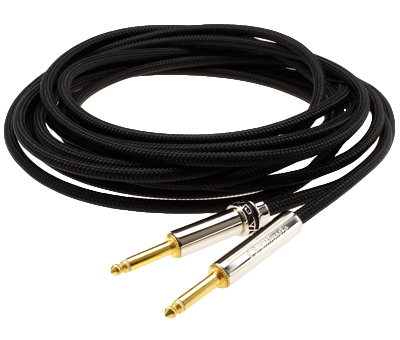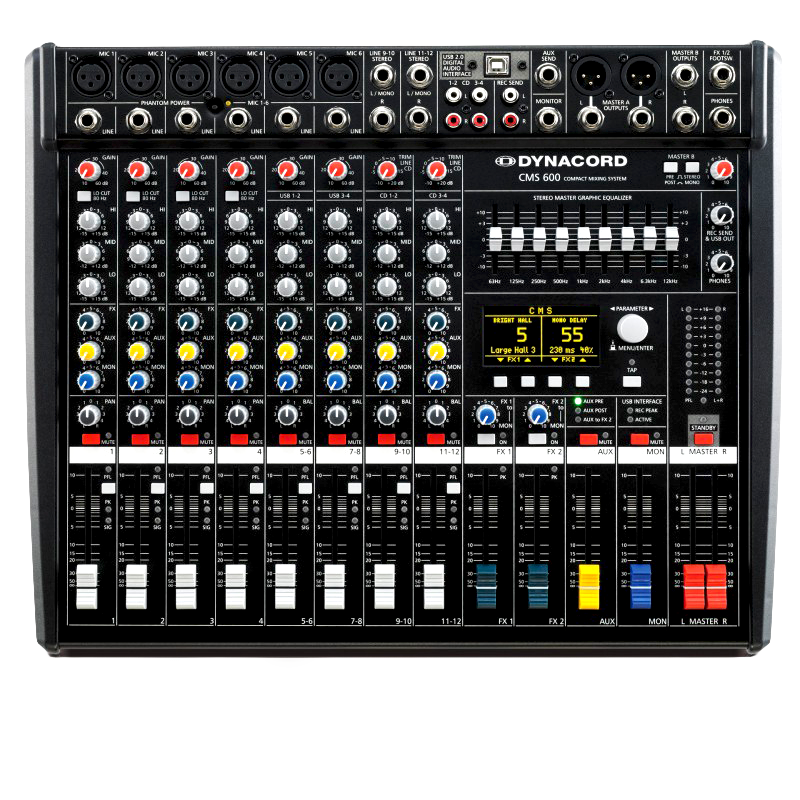PA Speakers
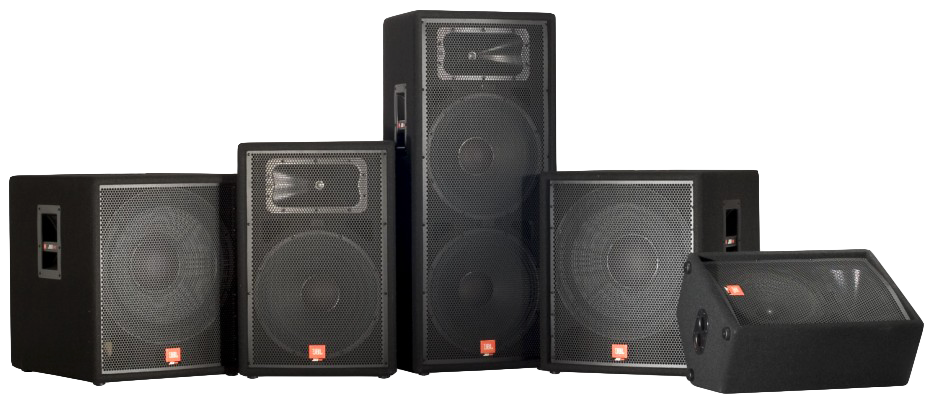
PA Speakers
PA SPEAKERS

WHEN & WHY PA SPEAKERS?
Learn everything you need to know about guitar straps, materials, types, features and pricing range. Get to know what might best suit you and your needs in a guitar strap.
LOUD SPEAKERS
A Loudspeaker explained, is an electroacoustic transducer that converts audio signal into a corresponding sound, and projects this sound over various distances, to be heard further away from the physical location of the actual speaker.
Speakers are usually embedded within an enclosure or otherwise referred to as a 'speaker cabinet', which is normally a rectangular or square box made from wooden or sometimes durable plastic materials. A loudspeaker usually has multiple loudspeaker transducers - each will produce a part of the audible frequency range - (High, Mid, Low ranges).

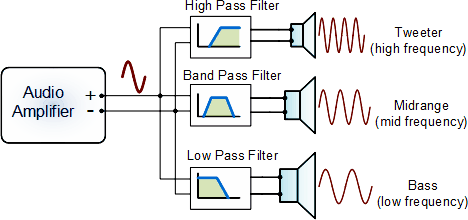
The entire unit is referred to as a 'loudspeaker' while the individual speakers that make up the loudspeaker are referred to as 'drivers'. The drivers designed to reproduce high audio frequencies are called tweeters and are usually placed at the top of a loudspeaker layout. The drivers designed to produce middle frequencies are called mid-range drivers and are normally placed in the centre, while the speakers designed to produce low frequencies are found at the bottom and are referred to as woofers and subwoofers.
A breakdown of the individual speakers placed in a cabinet making up a loudspeaker:-
* Tweeter:
Produces the highest frequencies | 1-2" Cone-type driver OR 1-4" Compression driver | Frequency Range: Usually between 2000 Hz and 20000 Hz. A tweeter is a much smaller speaker specifically designed to reproduce high audio frequencies that are above a certain point. The design of the tweeter speaker, is to specifically disperse high frequencies evenly through a room. If the design disperses too narrowly, the listening positions become limited. If the audio is dispersed too widely, then one loses the direction of the sound all together.
TYPES OF TWEETERS
Cone Tweeter

Cone tweeters are shaped to disperse sounds more narrowly, sort of limiting the listening abilities slightly and are best used when placed in the corners of the room facing towards the centre. Cone tweeters were popular until Dome models were designed which offer better capabilities in terms of sound dispersion and quality projection. Cone tweeters are still used, but very seldomly seen these days, especially in professional audio setups.
Dome Tweeter
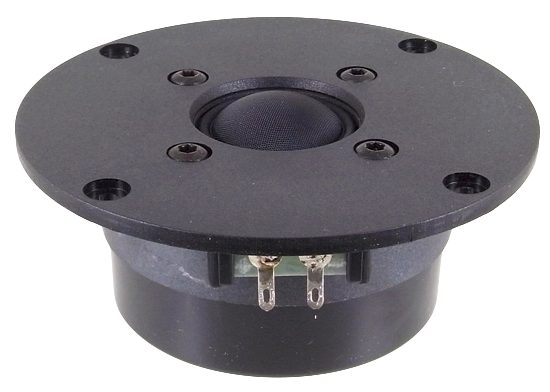
A dome tweeter is constructed with a voice coil attached to a dome (usually made of a durable woven fabric, thin metal or suitable material); it is then attached to the magnet or top plate with a low compliance suspension. The major feature of dome tweeters is their voice call diameters; ranging from 19mm (0.75") up to 38mm (1.5"). Typically, the sound projection quality and dispersion is of a higher level than that of the standard Cone tweeter.
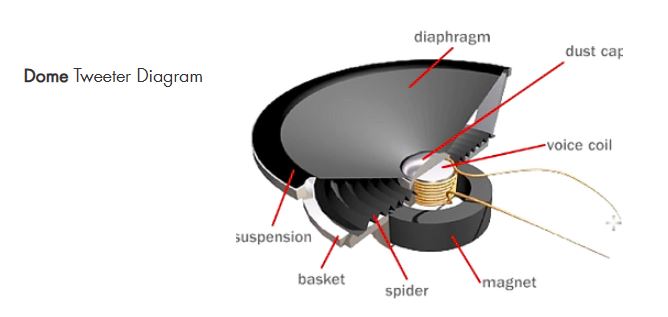
Piezo Tweeter

A piezo tweeter contains a piezoelectric crystal that is generally enfused to a mechanical diaphragm. It works by applying an audio signal to the crystal, which will vibrate the diaphragm and convert electrical energy into mechanical. The conversion of electrical pulses to mechanical vibrations, and the conversion of returned mechanical vibrations back into electrical energy, is the basis for ultrasonic testing.
Ribbon Tweeter
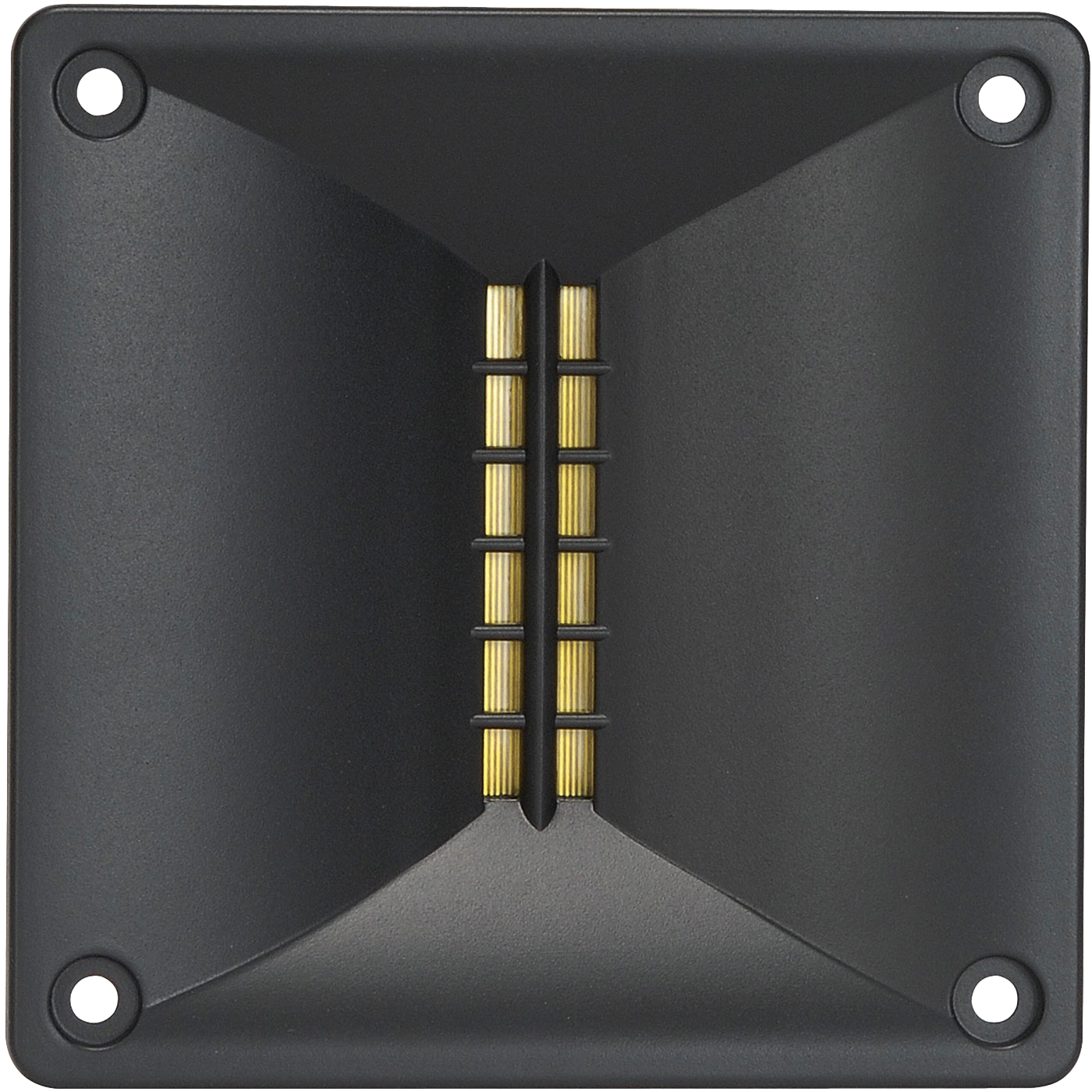
A Ribbon tweeter is constructed by using a very thin diaphragm, usually made of aluminium or some sort of metalized plastic film; this is then embedded and surrounded by magnets that are used to apply a magnetic force to the fine ribbon, in turn creating and projecting a sound wave.
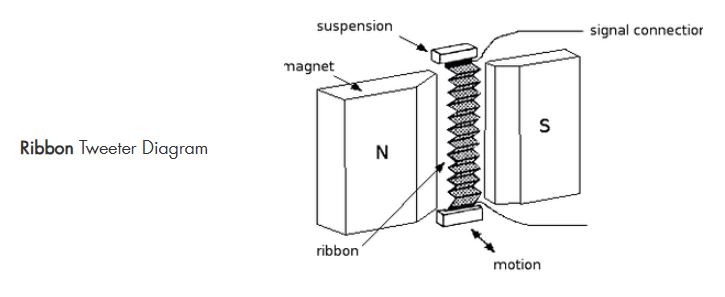
Electrostatic Tweeter
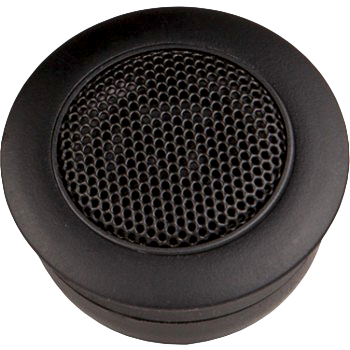
An electrostatic tweeter has a thin (usually plastic) diaphragm that has a thin conductive coating, suspended between two screens or perforated metal sheets, referred to as stators.
Electrostatics can reduce even-order harmonic distortion because of their push-pull design, while having minimal phase distortion. The design is somewhat old, but only occupies a very small percent of the markets due to a number of factors like large size, High costs and fragility.
* Mid-Range:
Produces the mid-ranged frequencies | 5-12" Cone-type driver OR 2 1/2 - 4" Compression driver mounted on a dispersion horn | Frequency Range: Usually between 250 Hz and 2000 Hz. A Mid-range driver handles the most significant part of an audible spectrum; it is tasked to handle the area or zone, where the most fundamentals of musical instruments and the human voice are emitted and stored. This particular zone contains most of the sounds that are familiar to the human ear and where discrepancies are most easily observed. Because of this, it is important that good-quality mid-range drivers should have low-distortion reproduction capabilities.
* Woofer:
Produces the low-ranged frequencies | Usually 10-18" Cone-type driver | Frequency Range: Usually between 40 Hz and 500 Hz. A Woofer is designed to produce the lowest frequencies of an audible spectrum and is a common design type - electrodynamic driver - with a basic structure of a stiff paper cone, driven by a magnetic field.
* Subwoofer:
Produces the lowest-ranged frequencies | Usually 12-24" Cone-type driver | Frequency Range: Usually between 20 Hz and 200 Hz. Subwoofers are designed to produce the lowest audible frequencies known as bass. Subwoofers have been designed using a number of enclosure approaches and used in a large variety of audible applications.
Notice how the high-frequency range driver has been nicknamed tweeter after a bird's high sounding 'tweet' and the low bass frequencies driver being nicknamed a woofer, much like the sound of a deep, low sounding "woof" from a dog. Interesting way of remembering which is which while mid-range is simple with 'mid' meaning middle!
2-WAY & 3-WAY | FULL RANGE SPEAKER
There are different designs and layouts for loudspeakers in terms of drivers used and how many etc, that accommodate for many different audible scenarios and requirements. The standard is typically the 3-way design, which is the most popular, as 3-way refers to the unit incorporating all 3 types of drivers typically needed for an overall quality sound: Tweeter | Mid-Range + Woofer. A 3-way speaker doesn't always work out to be the best option though; it does ultimately depend on the materials plus quality of speakers used and how it delivers sound overall, amongst other factors.
A speaker cabinet can host two types of drivers i.e. Mid-Range and Woofer which labels this particular structure a
2-way; and to really simplify it down: -
A Full Range Speaker is a speaker that has the ability to produce all the frequency ranges from one driver, so you could even find yourself in a situation where a simple 1 driver speaker could be suitable for all your sound needs.
Ultimately, this will again depend on your overall setup, requirements and preferences as a musician, but check out some other design types below...
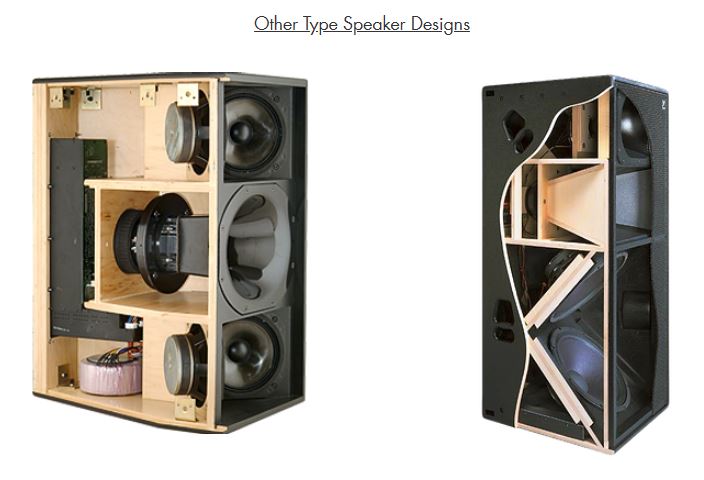
https://en.wikipedia.org/wiki/Mixing_console
CROSSOVERS | WHAT ARE THEY?
Well, simply put... you cannot just put a tweeter, mid-range and woofer into an enclosure together, wire them up and expect everything to simply sound good; that's just not how it works, especially with different sound frequencies. So what is a crossover and what do they do? Essentially a Crossover is an electronic circuit that assigns the appropriate frequency range to the different speaker types - tweeter, mid-range and woofer. The moment you have more than one speaker of different types i.e. tweeter + woofer OR tweeter + mid-range + woofer; then you're going to need a crossover to ensure frequencies are appropriately assigned to the correct speakers installed.
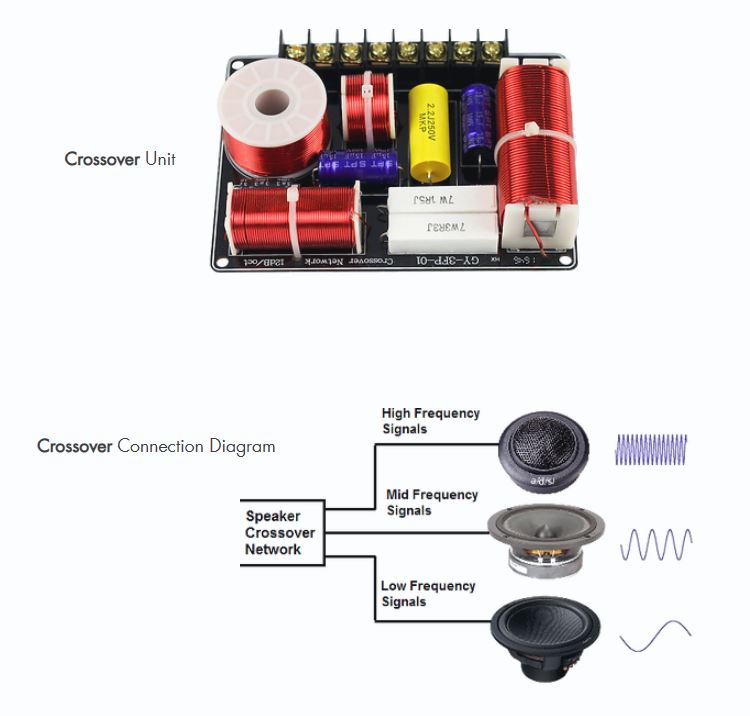
POWERED (Active) OR NON-POWERED (Passive) SPEAKERS
POWERED - “ACTIVE” SPEAKERS
The main feature of Active speakers is the fact that they host power amplifiers, crossovers and other signal processors - already built into the structure within the cabinet enclosure of the speaker. This will obviously introduce a major convenience factor, and tremendously simplifies set ups when you consider how one active speaker can act as an entire PA system, only requiring another music output device to plug into i.e. microphone etc. They can also be used as a bands primary set of speakers by plugging into the mixers main outputs.
Having Active Speakers can make things a little more comfortable and easier for a few reasons: Firstly, because they already have built-in functions & features in terms of power sources & effects, it does save on space when travelling for shows because in essence, you are carting around less equipment.
Also, it can be a lot easier to manage the overall sound from one source rather than a few units catering for various functions. These simplicity & convenience factors are also great for solo artists or bands playing smaller shows & venues that travel and set up themselves.
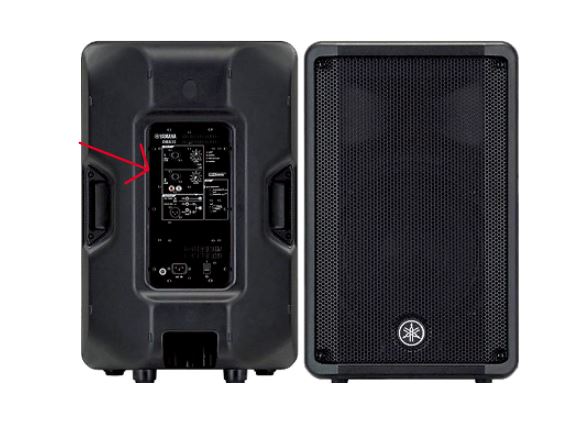
NON-POWERED - “PASSIVE” SPEAKERS
Passive Speakers are powered up by an external outboard amplifier. This means that more equipment is required for overall sound quality and projection. This is a better solution for more stable & permanent setups like church's, music venues etc, where moving around doesn't happen too much, but if you're looking to build up a pretty reasonable sized system and are looking for the ability to expand with versatility, then passive speakers would be the better option; even if travel is required.

DIFFERENCES | A BETTER UNDERSTANDING
A Passive Loudspeaker system amplifies the low-level audio signals via an external power amplifier prior to it being sent to the loudspeaker itself. This is where the signal is split by the passive crossover unit into their specific frequency ranges before arriving at each individual driver.
The Active speakers work in the same way as that of passive, except the amplifier is built into the speaker enclosure itself, creating an all-in-one speaker option.
A Fully Active loudspeaker provides a dedicated power amplifier for each individual driver. This execution has an extra step in the process though. The low-level audio is sent to an active crossover which splits the signal into the different frequency ranges, which is then sent to the power amplifiers and lastly to the individual specific drivers. This is a common design in concert audio.
These days, you will also probably come across new Hybrid Active Designs. An example of such type design and layout is having three drivers powered by two amplifiers - When this happens, an active two-way crossover unit will split the audio signal, usually into low and mid-high range frequencies. The low frequency driver is usually allocated it's own amplifier channel while mid-high range frequency drivers will share a channel that splits the output with a passive two-way crossover.
COMPARISON: - ADVANTAGES & DISADVANTAGES
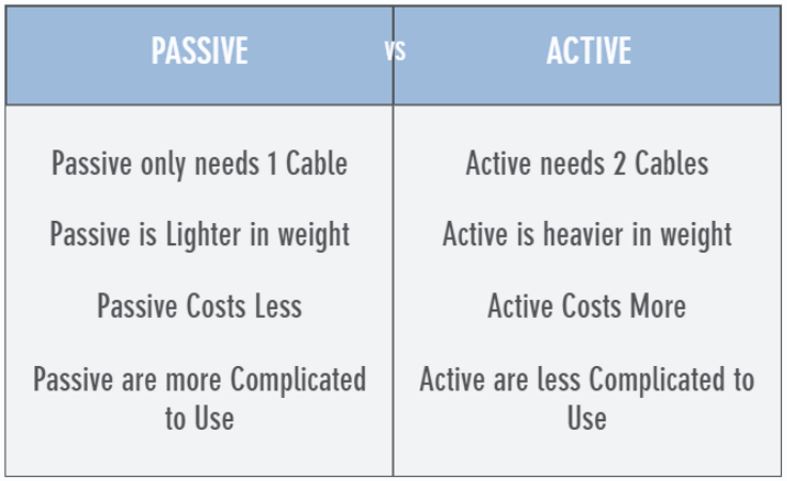
https://en.wikipedia.org/wiki/Powered_speakers
TOP 5 PA SPEAKER MANUFACTURERS
1.

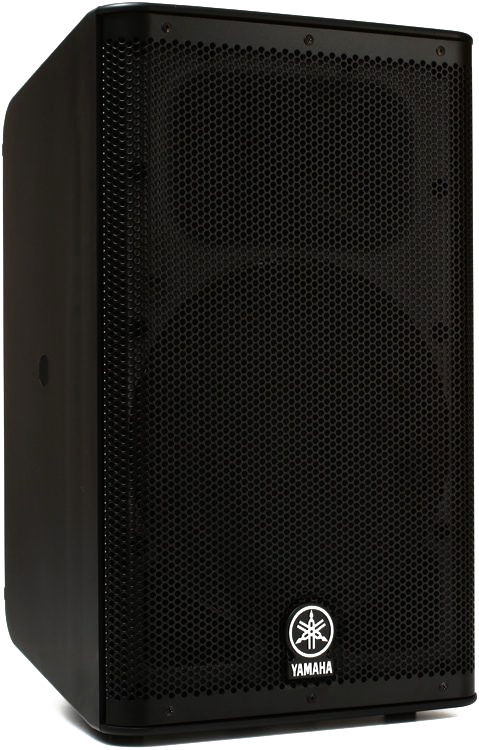
Yamaha Corporation is a Japanese multinational corporation and conglomerate with a very wide range of products and services, predominantly musical instruments, electronics and power sports equipment.
2.
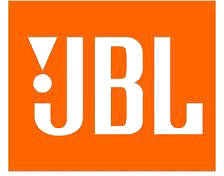

JBL is an American company that manufactures loudspeaker and associated electronics. There are two independent divisions within the company – JBL Consumer and JBL Professional. The former produces audio equipment for the consumer home market while the latter produces professional equipment for the studio, installed sound, tour sound, portable sound (production and DJ), and cinema markets. JBL is owned by South Korean company Samsung Electronics through its Harman subsidiary.
3.

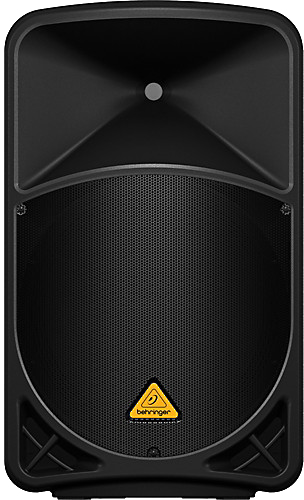
Behringer is an audio equipment company founded by the Swiss engineer Uli Behringer in 1989, in Willich, Germany. Behringer was listed as the 14th largest manufacturer of music products in 2007.
http://www.musictri.be/brand/behringer/home
4.

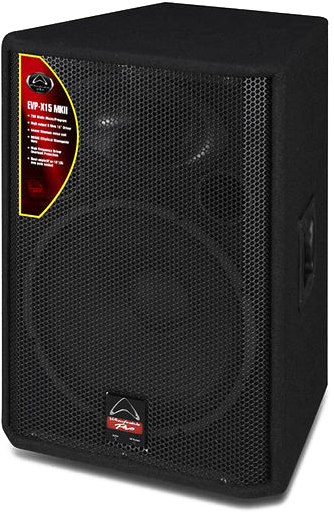
Wharfedale is the name of a prominent audio equipment manufacturer in the United Kingdom best known for loudspeakers. It is currently part of the International Audio Group. Wharfedale also used to manufacture televisions, DVD players, set-top boxes and Hi-Fi players. Since 2008, they have only manufactured and sold audio equipment.
5.

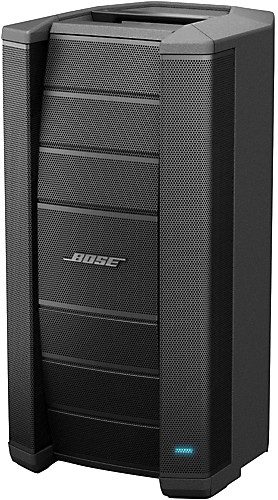
Bose Corporation is a privately held American corporation, based in Framingham, Massachusetts, that designs, develops and sells audio equipment. Founded in 1964 by Amar Bose, the company sells its products throughout the world.



